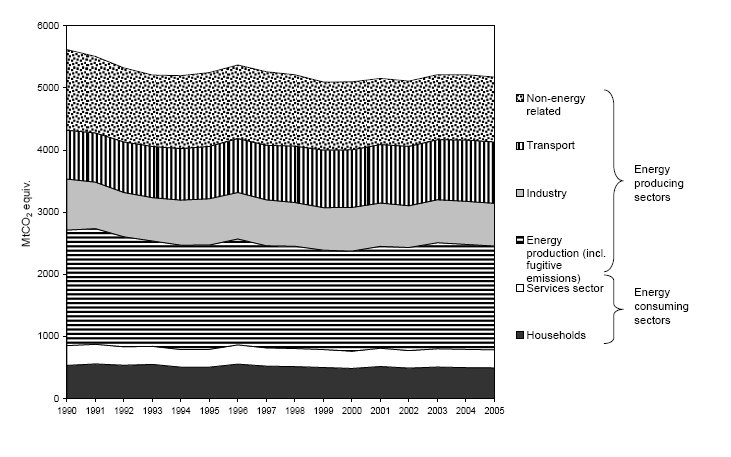All official European Union website addresses are in the europa.eu domain.
See all EU institutions and bodiesAn official website of the European Union | How do you know?
Environmental information systems
Total energy and non-energy related greenhouse gas emissions by sector, EU-27
Chart (static)

Downloads
Data sources
Metadata
More info
Loading
- Greenhouse gas emissions are those covered by the Kyoto Protocol and include carbon dioxide (CO2), methane (CH4), nitrous oxide (N2O) and three fluorinated gases, hydrofluorocarbons (HFCs), perfluorocarbons (PFCs) and sulphur hexafluoride (SF6).
- For the period 1990-2005 the greenhouse gas emissions have been calculated in t CO2-equivalent using the following global warming potentials (GWP) as specified in the Kyoto Protocol: 1 t CH4 = 21 t CO2-equivalent, 1 t N2O = 310 t CO2-equivalent, 1 t SF6 = 23 900 t CO2-equivalent. HFCs and PFCs have a wide range of GWPs depending on the gas and emissions are already reported in t CO2-equivalent.
- Emissions from international marine and aviation bunkers are not included in national total emissions but are reported separately to the UNFCCC and are therefore not included in the graph.
- The energy production sector includes public electricity and heat production, refineries and the manufacture of solid fuels. Energy-related fugitive emissions include releases of gases from exploration, production, processing, transmission, storage and use of fuels. The vast majority of energy-related fugitive emissions are connected with activities of the energy production sector. Only a very small percentage of fugitive emissions are connected with activities of the transport sector. All energy-related fugitive emissions have therefore been attributed to the energy production sector.
- 'Services sector' also includes military and energy-related emissions from agriculture.
